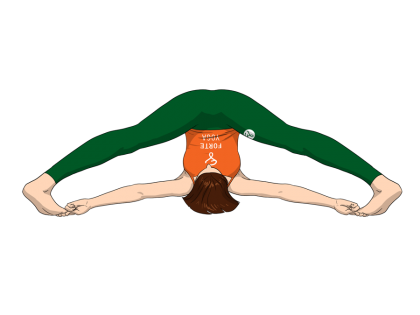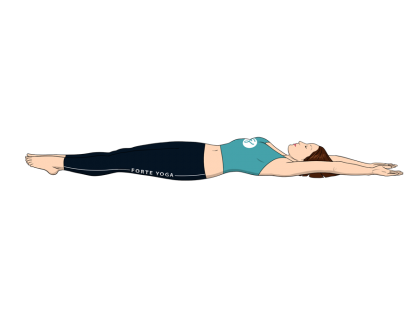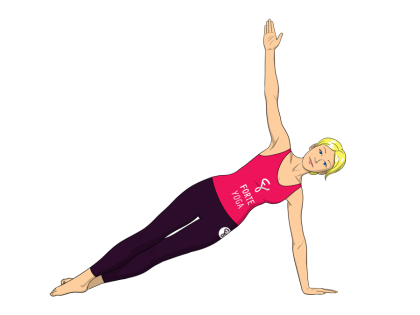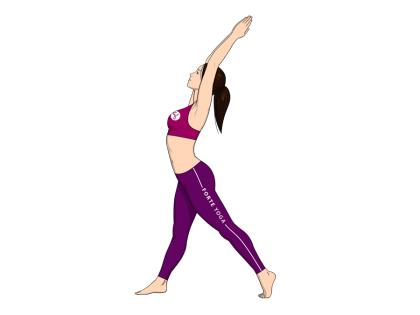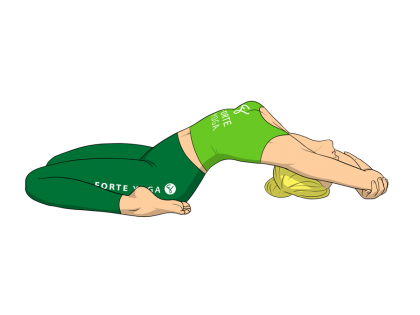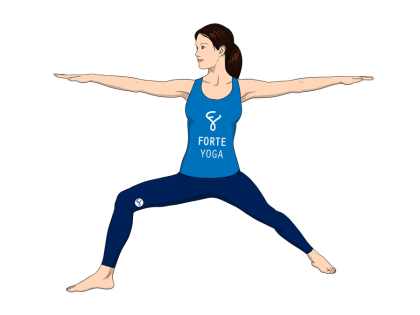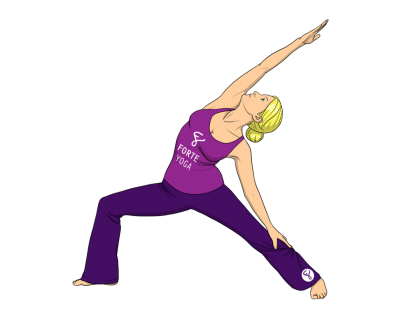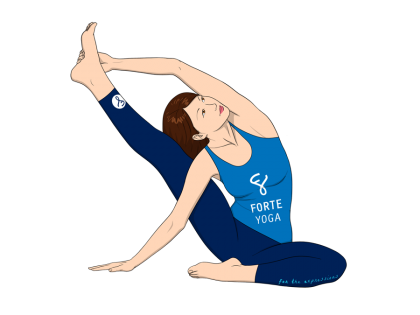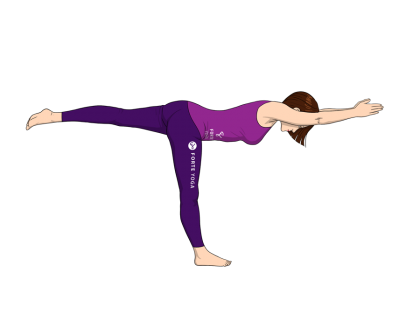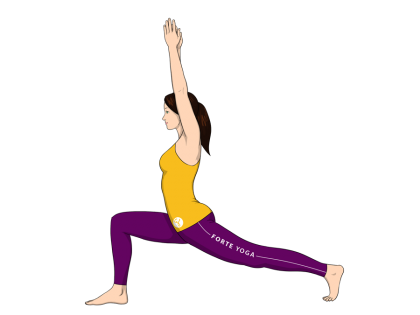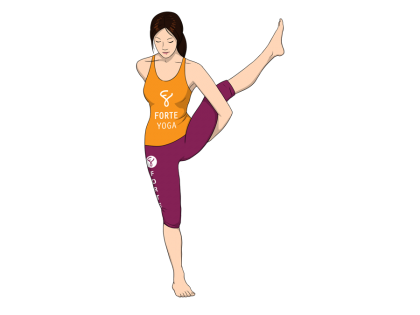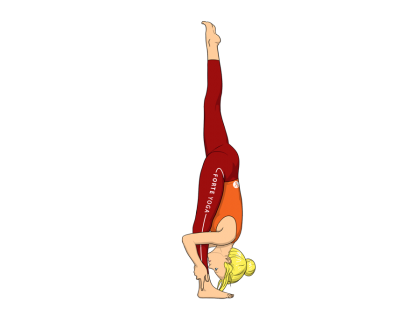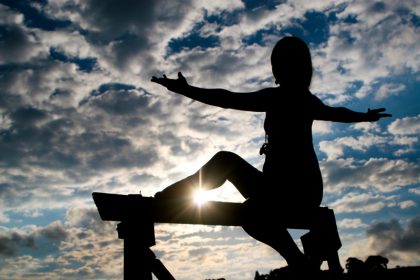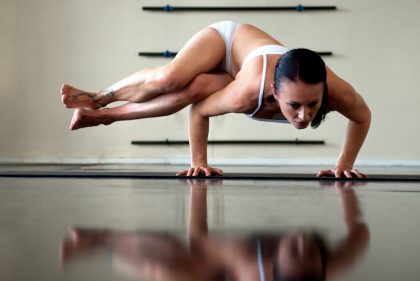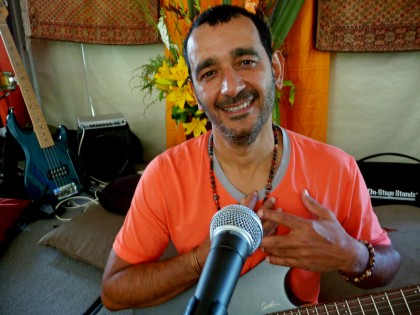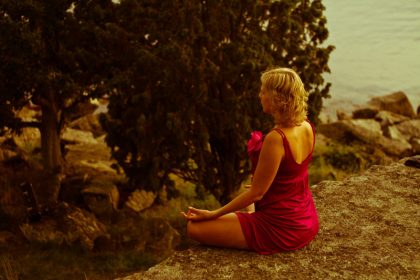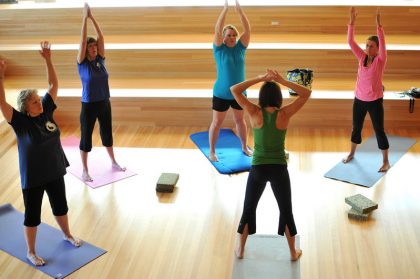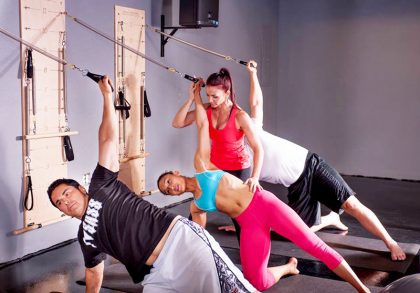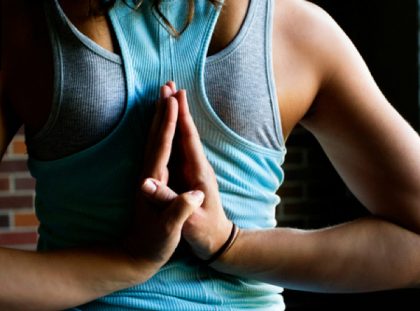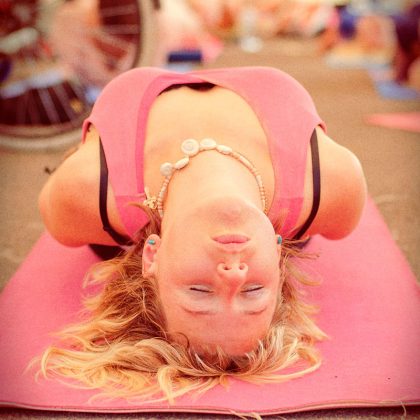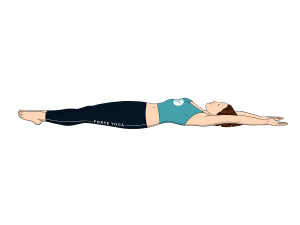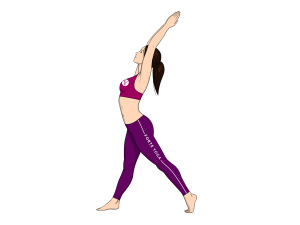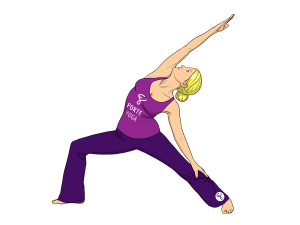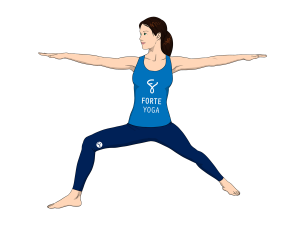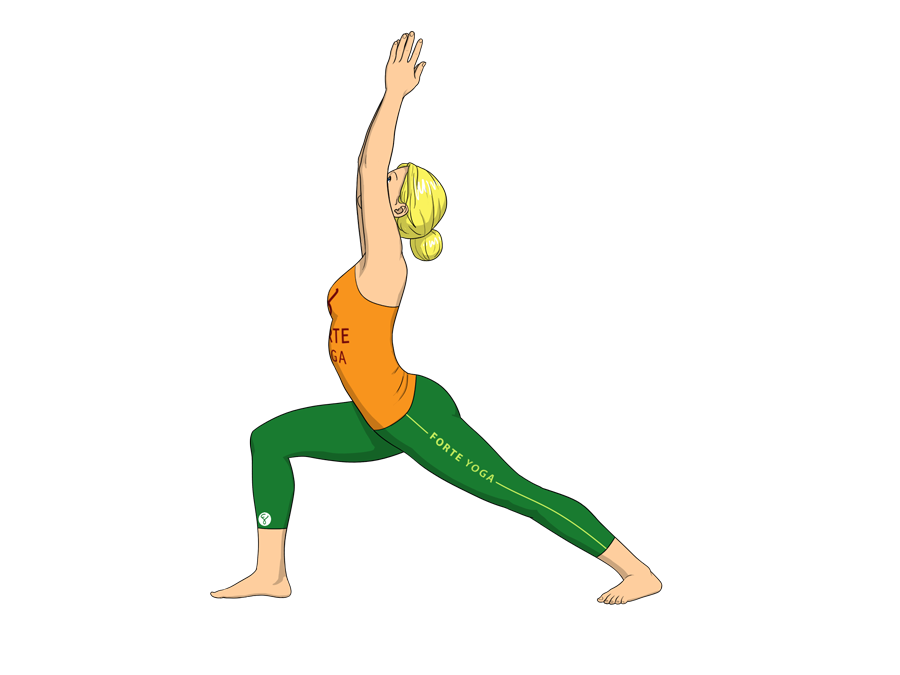
overview
Warrior I Yoga Pose is a standing pose that targets the calves and is ideal for yogis and yoginis at all levels.
 muladhara – the root chakra
muladhara – the root chakra manipura – the wisdom chakra
manipura – the wisdom chakra ajna – the third eye chakra
ajna – the third eye chakrarelated poses
[yoga-sharrre]
How To Do Warrior I Yoga Pose
- Start in the Mountain Pose (Tadasana). Facing forward, step your left foot back 3-4 feet, or roughly one-leg’s length. Making sure your left and right heels are aligned, turn your left heel to a 45-60 degree angle away from your body. Keep your right foot facing forward. Heels firmly grounded, rotate your hips to ensure they are both facing forward, parallel to the mat (if you’re using one).
- Raise your arms straight out from your sides and perpendicular to the floor, fingers reaching out. Continue to draw your arms up until you are reaching through your pinkies toward the ceiling, arms drawn up by your head. Be sure to keep your shoulders low to allow space between your arms and ears. While reaching through your fingers, hug your shoulder blades in towards your back to help prevent your shoulders from moving in toward your neck.
- Keeping your left heel firmly grounded, exhale while bending your right knee. Bend just enough so that your right knee is positioned directly above your right ankle, shin running perpendicular to the floor. If possible, the length of your thigh should be parallel to the floor.
- Continue to actively reach up with your arms and through the pinky-sides of your hands, slightly arching your back. Apply pressure on your outer-left heel to strengthen the pose, and on your right heel for stability. If possible, press your palms together above your head (only if you can do so without bringing your shoulders up to your neck). Reach a little higher through the pinkies. You may keep your head forward or slightly tilted back to gaze at your thumbs, but do not bend your neck.
- Hold this pose for 30-60 seconds, taking controlled, mindful breaths. Inhale as you straighten the right knee, still reaching through the pinkies, and turn your left foot forward. Come back to Mountain Pose, releasing your arms as you exhale, or leave them in the upward position to go straight into the next leg. Either way, repeat with the right foot, finishing with Mountain Pose.
Notes
- Breathe deeply through each step.
- Do not perform if you have high blood pressure (hypertension) or heart problems.
- If you have shoulder pain, keep your arms parallel or slightly wider than parallel to each other.
- If you have neck pain, do not tilt your head back but instead remain facing forward.
Tips
Imagine your whole body lifting; your arms to the ceiling, your pelvic bone towards the navel, your ribcage away from the pelvis.
However, keep your anchors in check; your left and right heels, your shoulder blades.
Stretches & Strengthens
All Muscles: Quads, hamstrings, calves, abs, shoulders, neck, chest, groin, hip flexors
Target Muscles: Quads, hamstrings, calves
Health Benefits of Warrior I Yoga Pose
- Improves balance and concentration.
- Can help relieve sciatica.

